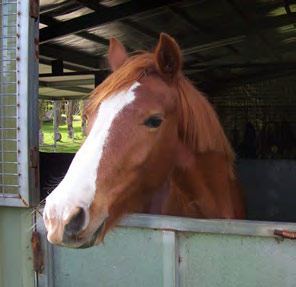Over the stable door
Greetings Fellow Equines and Horse Owners!
Finally, we have some rain, how good is that? Weather changes often mean changes in feed. Extremes of weather can show up in your horses’ hooves. Other factors affecting feet include the health and age of a horse, the type and frequency of work that he does, his size and weight, whether he wears shoes or not and the type of terrain he is worked on. “No hoof no horse” as the saying goes and it pays to be checking your horse’s feet on a regular basis. Normally a horse’s foot should be cool to the touch. Heat is an indicator of some type of stress. This could include all manner of things such as a stone wedged between the frog and the sole or between the shoe and the hoof. Greasy heel, thrush, seedy toe, hoof abscesses, tendon wear or damage, laminitis and internal problems involving the navicular.
So, before you even go to groom your horse prior to riding, check his feet first, as this could save you valuable time in getting the vet in. The other advantage of checking your horse’s feet on a regular basis is that you will get to know those feet really well. Most horses will have one hoof that is a bit warmer than the others and that may well be normal for him. Getting to know what is normal for your horse will save time and confusion later on when looking for the cause of a lameness problem. Cleaning the feet out regularly, especially once we have some rain, will ensure that the hoof doesn’t get packed in hard with mud. This can also cause your trusty friend to look lame too. Conditions such as thrush, seedy toe and greasy heel are notoriously hard to eliminate, so early diagnosis is very beneficial.
Thrush usually occurs between the frog and sole and smells strongly, so it is easy to detect. Daily cleaning with hydrogen peroxide should help to clear this up, but as always consult with your vet. Seedy toe occurs often in horses with flatter front feet. Dampness and bacteria work their way up inside the laminae of the hoof. Needs to be cleaned out and kept as dry as possible. Greasy heel mostly occurs in the lower pastern area, although it can go higher up the leg. It is very painful as the skin can crack and bleed and the horse will appear lame. This needs to be treated ASAP and kept as dry and clean as possible. Good horse master -ship will help to ensure that your horse is kept as healthy as possible in all situations. Of course, horses being horses, things can go horribly wrong, despite all our precautions! At least if those precautions have been taken, it has probably lessened the chances of a more serious injury.
Horses tend to either fall into the curious or the suspicious category, and it is those curious ones who regularly get themselves into mischief. One of my paddock mates did just that a couple of months back and ripped open his chest 30cm. Of course, he also ripped out the stitches within 4 days too, so it was looking very ugly. Amazingly after only 8 weeks he was totally healed.
Really this month’s message is about prevention being better than cure and being a good horse master to your special friend!
Happy munching and safe riding,
Hamish

